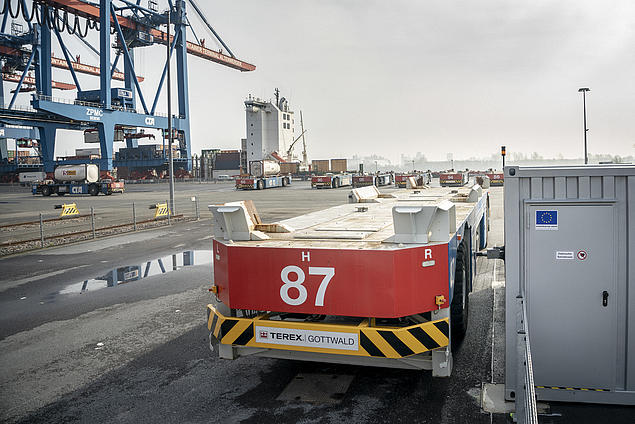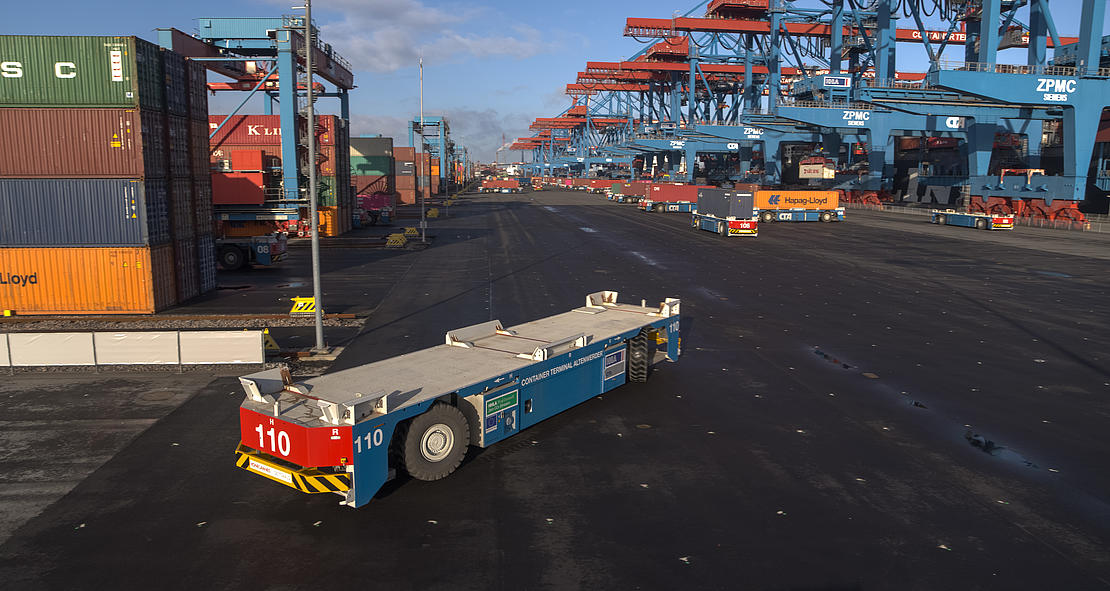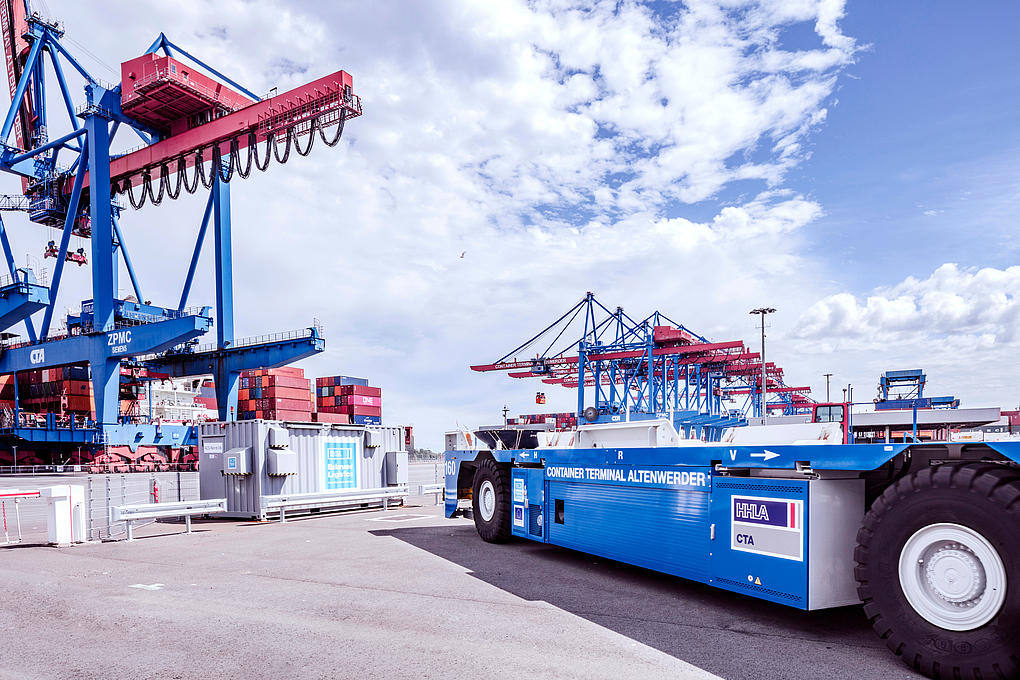CTA operates a fleet of 95 AGVs, that, for the most part, were still operated using diesel-powered hydraulic systems or diesel-powered electrical systems. Since 2017, efforts have been underway to gradually adapt the drivetrains of these multi-tonne, ground-handling vehicles to lithium-ion batteries. A completely new infrastructure needed to be established for this, including for example charging stations, transformers and power lines.
At the end of 2023, CTA took the last diesel-powered AGV out of service. The fleet now consists of 100% battery-powered vehicles that run on green electricity. This means that fossil fuels are no longer required for all container transport from the ship to the container warehouse - the processes are fully electrified. By switching to battery-powered AGVs and the associated significant reduction in diesel consumption, around three million litres of diesel are saved at CTA every year. This corresponds to around 8,000 tonnes of CO2 emissions.
This conversion to battery-powered electrical drives received funding of just under 8 million euros from the European Regional Development Fund (ERDF).

As part of the conversion of the AGV fleet to battery-powered drives, HHLA offers the lithium-ion batteries of the ground-handling vehicles on the electricity market to generate reserve energy. During operationally quiet periods the AGVs are to be strategically connected to charging stations, either to collect excess energy from the power grid or to feed energy back into the power grid as a “primary reserve”. This will help to stabilise the network frequency of the power grid. HHLA is making an important contribution to the success of the energy transition with these measures. To be able to temporarily offer reserve power of up to 4 MW to the power market, the CTA will set up twice as many charging stations as would actually be logistically necessary.
The control software required for this purpose still needs to be researched and developed, which will be done through the project FRESH, which was launched at the start of 2019.


Rethink. Think further. Think ahead.
How can we shape the future of logistics? Discover how innovative solutions and technologies are paving the way for more efficient and sustainable logistics.
Innovation at HHLA